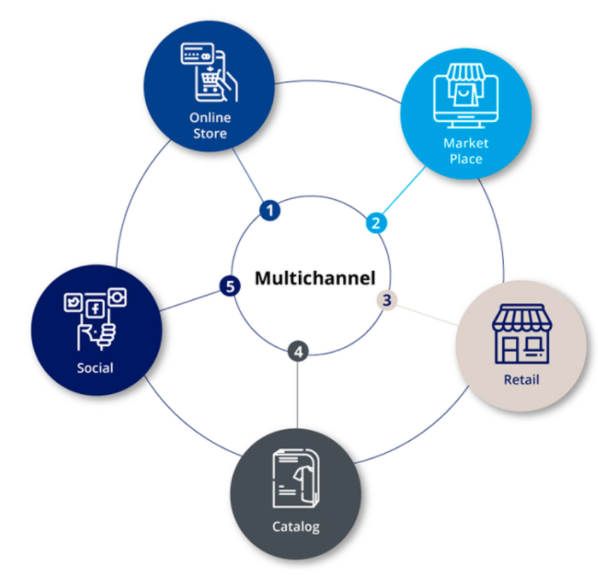Individual Sales Professional (1 years course)
Individual Sales Professional click here
Brief Job Description
Individuals in this position work for him/herself to earn income instead of working for an employer that
pays a salary/wage. An Individual in this position can also be a Direct Sales Agent / Salesman / Sales
Executive working on the field to achieve sales objectives / business targets.
Personal Attributes
The individual needs to be physically fit to be able to fulfil tasks efficiently and be mentally balanced to be
able to motivate self to deal with unexpected situations, if any. He/she should also have product/service
knowledge, good interpersonal skills and customer service skills.

Get licenses, follow legal policies and procedures to start/run business
Description
This unit deals in sub tasks that lead to effective implementation of legal compliances, policies and
procedures for setting up/running own business
Elements and Performance Criteria
Liaison and interact with local corporations/authorities for smooth conduct of business
To be competent, the user/individual on the job must be able to:
PC1. identify local corporations/authorities that have a bearing on the particular business
process
PC2. build and maintain relationships with the key persons to ensure smooth functioning of
business
PC3. get permissions and compliances as per legal requirements
PC4. complete business registration and other legal formalities
PC5. examine legal options for the most suitable type of business structure
PC6. seek legal and accounting expertise as required to inform final decision regarding business
structure
Learn and orient oneself on knowledge of legal policies, compliances , quality norms with respect to
selling of products and services
To be competent, the user/individual on the job must be able to:
PC7. describe policies and procedures that have a bearing on the business
PC8. describe the relevant rules and legislative policies
PC9. conform to the rules and policies for smooth functioning of business
PC10. describe the concept of minimising losses and maximising gains
PC11. secure information on purchase rights to products and services and ensure full
understanding of their implications
PC12. establish cost of procurement rights to products and services (if applicable)
PC13. determine brand ownership and protection rights
Update self on handling of goods, equipment, hazardous material to
To be competent, the user/individual on the job must be able to:
PC14. describe processes related to handling of goods, equipment and hazardous material
involved in the business
PC15. understand hazards and risks involved in the above processes
Knowledge and Understanding (KU)
The individual on the job needs to know and understand:
KU1. local corporations/authorities that have a bearing on the particular business process
KU2. policies and procedures that have a bearing on the particular business process
KU3. legal formalities applicable for the particular business
KU4. processes related to legal compliance requirements involved in the business
KU5. hazards and risks involved in the business
Generic Skills (GS)
User/individual on the job needs to know how to:
GS1. complete documentation accurately
GS2. collate simple data when required
GS3. read information accurately
GS4. read and interpret data sheets
GS5. use gestures or simple words to communicate where language barriers exist
GS6. use questioning to minimise misunderstandings
GS7. display courteous and helpful behaviour at all times
GS8. make appropriate decisions regarding the responsibilities of the job role
GS9. plan and organize service feedback files/documents
GS10. schedule daily activities and draw up priorities; allocate start times, estimate completion
times, materials, equipment and assistance required for completion
GS11. build customer relationships and use customer centric approach
GS12. identify problems immediately and take up solutions quickly to resolve delays
GS13. think through the problem, evaluate the possible solution(s) and adopt an optimum /best
possible solution(s)
GS14. data interpretation and its inference
GS15. how to break down complex problems into single and manageable components within his/her
area of work
GS16. apply, analyze, and evaluate the information gathered from observation, experience,
reasoning, or communication, as a guide to thought and action
Perform basic accounting practices
Description
This unit deals in sub tasks that deal in understanding and implementation of business accounting.
Elements and Performance Criteria
Manage financial resources and cash flow
To be competent, the user/individual on the job must be able to:
PC1. assess and identify source of funding and what is needed to secure that funding
PC2. plan, monitor and record the cash flow
PC3. open and manage a bank account
PC4. control costs through assessment and interpretation of information on costs and resource
allocation
PC5. prepare budget to help better planning and management of finances
PC6. control budget through monitoring of various financial elements such an income vis-a-vis
expenditure, profit vis-à-vis loss etc. and correct deviations
Maintain Profit and Loss Accounts
To be competent, the user/individual on the job must be able to:
PC7. understand elements of basic financial accounting
PC8. conduct basic accounting tasks
PC9. create and maintain reports
PC10. describe sources of profits and causes of losses as reflected in the reports
Ensure implementation of security procedures with respect to monetary transactions
To be competent, the user/individual on the job must be able to:
PC11. understand possible fraudulent activities related to monetary transactions
PC12. implement security procedures and checks to prevent monetary losses due to fraudulent
activities
Knowledge and Understanding (KU)
The individual on the job needs to know and understand:
KU1. importance of error free accounting
KU2. legal implications of erroneous accounting
KU3. basic mathematical skills
KU4. elements specific to business, that need to be considered in account
Generic Skills (GS)
User/individual on the job needs to know how to:
GS1. complete documentation accurately
GS2. collate simple data when required
GS3. read information accurately
GS4. read and interpret data sheets
GS5. use gestures or simple words to communicate where language barriers exist
GS6. use questioning to minimise misunderstandings
GS7. display courteous and helpful behaviour at all times
GS8. make appropriate decisions regarding the responsibilities of the job role
GS9. plan and organize service feedback files/documents
GS10. schedule daily activities and draw up priorities; allocate start times, estimate completion
times, materials, equipment and assistance required for completion
GS11. build customer relationships and use customer centric approach
GS12. identify problems immediately and take up solutions quickly to resolve delays

GS13. think through the problem, evaluate the possible solution(s) and adopt an optimum /best
possible solution(s)
GS14. data interpretation and its inference
GS15. how to break down complex problems into single and manageable components within his/her
area of work
GS16. apply, analyze, and evaluate the information gathered from observation, experience,
reasoning, or communication, as a guide to thought and action
Continuously update self on new products/services offered by business
Description
This unit deals in sub tasks that lead to appropriate knowledge of the product/service being sold by
business.
Elements and Performance Criteria
Update oneself on information related to products/services relevant to business
To be competent, the user/individual on the job must be able to:
PC1. describe the products/services involved in the business
PC2. understand the market trend with respect to sales patterns
PC3. identify related products/services and possible opportunities with respect to up- selling, crossselling, expansion of business etc.
PC4. describe the concept of sourcing and processing product and service data relevant to business
PC5. maintain accurate and current details of products and services in product database
PC6. conduct study of products/services offered by competition
Operate relevant equipment required for daily operations
To be competent, the user/individual on the job must be able to:
PC7. operate relevant equipment involved in business
PC8. describe the precautions and maintenance required
PC9. identify and describe new technologies that can improve efficiencies and reduce risks
Knowledge and Understanding (KU)
The individual on the job needs to know and understand:
KU1. products/services involved in the business
KU2. related products/services
KU3. equipment involved in the business
Generic Skills (GS)
User/individual on the job needs to know how to:
GS1. complete documentation accurately
GS2. collate simple data when required
GS3. read information accurately
GS4. read and interpret data sheets
GS5. use gestures or simple words to communicate where language barriers exist
GS6. use questioning to minimize misunderstandings
GS7. display courteous and helpful behavior at all times
GS8. make appropriate decisions regarding the responsibilities of the job role
GS9. plan and organize service feedback files/documents
GS10. schedule daily activities and draw up priorities; allocate start times, estimate completion
times, materials, equipment and assistance required for completion
GS11. build customer relationships and use customer centric approach
GS12. identify problems immediately and take up solutions quickly to resolve delays
GS13. think through the problem, evaluate the possible solution(s) and adopt an optimum /best
possible solution(s)
GS14. data interpretation and its inference
GS15. how to break down complex problems into single and manageable components within his/her
area of work
GS16. apply, analyze, and evaluate the information gathered from observation, experience,
reasoning, or communication, as a guide to thought and action
Conduct daily business operations
Description
This unit deals in sub tasks that ensure business operations are conducted efficiently and effectively to
maximize profits to maximize profits.
Elements and Performance Criteria
Conduct market analysis to identify customer need and plan product assortment/range accordingly
To be competent, the user/individual on the job must be able to:
PC1. identify target audience profile/market
PC2. identify buying patterns of customers to define assortments and modify them as per trends
observed
PC3. identify customers easy to access in order to target selling to them
PC4. identify products being offered by competitors/other players in the locality
Execute marketing plans through promotions and campaigns to create awareness of generate customer
interest
To be competent, the user/individual on the job must be able to:
PC5. select the right medium of promotions
PC6. organize resources depending upon the marketing medium
PC7. plan budget requirements for the promotional programs
PC8. track and monitor effectiveness of the promotional programs
Effectively drive management of inventory and sales
To be competent, the user/individual on the job must be able to:
PC9. assess inventory/procuring capacity as per costs involved
PC10. assess operational costs
PC11. calculate projected break-even point
PC12. take steps to prevent inventory losses
PC13. calculate profits and margins
PC14. define targets to achieve business gains
PC15. ensure required inventory is on hand
PC16. match logistics of delivery to inventory supply requirements
PC17. monitor stock levels and maintain them at required levels
PC18. coordinate stock take or cyclical count
PC19. plan for contingencies

Knowledge and Understanding (KU)
The individual on the job needs to know and understand:
KU1. possible products/services that can be offered by own organisation
KU2. trend setters in the specific business
KU3. possible seasonal effects
KU4. mapping of target customers and identification of customer needs
KU5. computation of costs, profit & loss, sales figures etc., elements involved in setting of sales
targets
Generic Skills (GS)
User/individual on the job needs to know how to:
GS1. complete documentation accurately
GS2. collate simple data when required
GS3. read information accurately
GS4. read and interpret data sheets
GS5. use gestures or simple words to communicate where language barriers exist
GS6. use questioning to minimise misunderstandings
GS7. display courteous and helpful behaviour at all times
GS8. make appropriate decisions regarding the responsibilities of the job role
GS9. plan and organize service feedback files/documents
GS10. schedule daily activities and draw up priorities; allocate start times, estimate completion
times, materials, equipment and assistance required for completion
GS11. build customer relationships and use customer centric approach
GS12. identify problems immediately and take up solutions quickly to resolve delays
GS13. think through the problem, evaluate the possible solution(s) and adopt an optimum /best
possible solution(s)
GS14. data interpretation and its inference
GS15. how to break down complex problems into single and manageable components within his/her
area of work
GS16. apply, analyze, and evaluate the information gathered from observation, experience,
reasoning, or communication, as a guide to thought and action
Build relationship with vendors / dealers to ensure smooth business operations and increase sales
Description
This unit deals in building relationships with vendors/dealers.
Elements and Performance Criteria
Build and manage networks with vendors and dealers
To be competent, the user/individual on the job must be able to:
PC1. communicate clearly in the required local language
PC2. articulate clearly and coherently
PC3. respond appropriately
Establish trust and confidence in vendors and partners
To be competent, the user/individual on the job must be able to:
PC4. identify where to get help and information from
PC5. understand what is required from specific vendors
PC6. express need clearly and get into workable relationship with vendor/s
PC7. negotiate with vendors for better deal
PC8. ensure proper contracting with vendors
PC9. ensure minimization of possible risks and losses in vendor relationships
PC10. understand best practices and maintain cordial relationships
Knowledge and Understanding (KU)
The individual on the job needs to know and understand:
KU1. vendors and ways to connect with them
KU2. local language
KU3. basic offerings by vendors elsewhere
Generic Skills (GS)
User/individual on the job needs to know how to:
GS1. complete documentation accurately
GS2. collate simple data when required
GS3. read information accurately
GS4. read and interpret data sheets
GS5. use gestures or simple words to communicate where language barriers exist
GS6. use questioning to minimize misunderstandings
GS7. display courteous and helpful behavior at all times
GS8. make appropriate decisions regarding the responsibilities of the job role
GS9. plan and organize service feedback files/documents
GS10. schedule daily activities and draw up priorities; allocate start times, estimate completion
times, materials, equipment and assistance required for completion
GS11. build customer relationships and use customer centric approach
GS12. identify problems immediately and take up solutions quickly to resolve delays
GS13. think through the problem, evaluate the possible solution(s) and adopt an optimum /best
possible solution(s)
GS14. data interpretation and its inference
GS15. how to break down complex problems into single and manageable components within his/her
area of work

GS16. apply, analyze, and evaluate the information gathered from observation, experience,
reasoning, or communication, as a guide to thought and action
Meet health and safety requirements at place of work
Description
This unit deals in building awareness and implementing overall basic hygiene factors and understanding
emergency related procedure at the workplace.
Elements and Performance Criteria
Implementing overall basic hygiene factors and understanding emergency related procedures
To be competent, the user/individual on the job must be able to:
PC1. wash hands with clean water and soap in order to keep them clean at all times
PC2. wear clean and washed clothes every day
PC3. be presentable and well groomed to service customers of all types
PC4. use separate and clean handkerchief/cloth for wiping off perspiration or dust
PC5. keep the cleaning aids dry and clean
PC6. avoid sneezing or coughing around the area of work
PC7. sweep the surrounding area to create a tidy atmosphere
PC8. drain out or dry off any accumulation of stale water in the form of small pools, etc., which
can be breeding ground for mosquitoes
PC9. use government approved disposal stations or appropriately large waste bins to store and
dispose-off collected waste
PC10. advise customers to throw waste at designated bins or waste areas
PC11. prevent development of clean areas into unauthorized waste dump yards over time, in
coordination with co-vendors
PC12. describe ways and means to handle emergency situations like fire, robbery, riots etc.
PC13. describe ways and means to mitigate risks to people and property during emergencies
Disposing of waste safely
To be competent, the user/individual on the job must be able to:
PC14. avoid locating the vending cart near heaps of dumped industrial or food waste with pests
around
PC15. ensure that all waste is collected and disposed-off safely at the end of the day at the nearest
waste disposal station
PC16. ensure that waste water is drained-off in closed drains or in a designated way
PC17. describe other ways to maintain cleanliness. Not to litter and dump waste in an unauthorized
area

Taking precautionary measures to avoid work hazards
To be competent, the user/individual on the job must be able to:
PC18. understand the various work hazards
PC19. take necessary steps to eliminate or minimize hazards
PC20. describe the causes of accidents at the workplace and identify measures to prevent such
accidents from taking place
PC21. take preventive measures to avoid risk of burns and other injury








